Cutting, dry brushing & sponging
Well laid clean brick works is key to a perfect finish.
After joints are rolled, polished or raked, the mortar on the bricks edges and face should be removed by cutting and drying. Dry brushing when crisp with a firm brush.
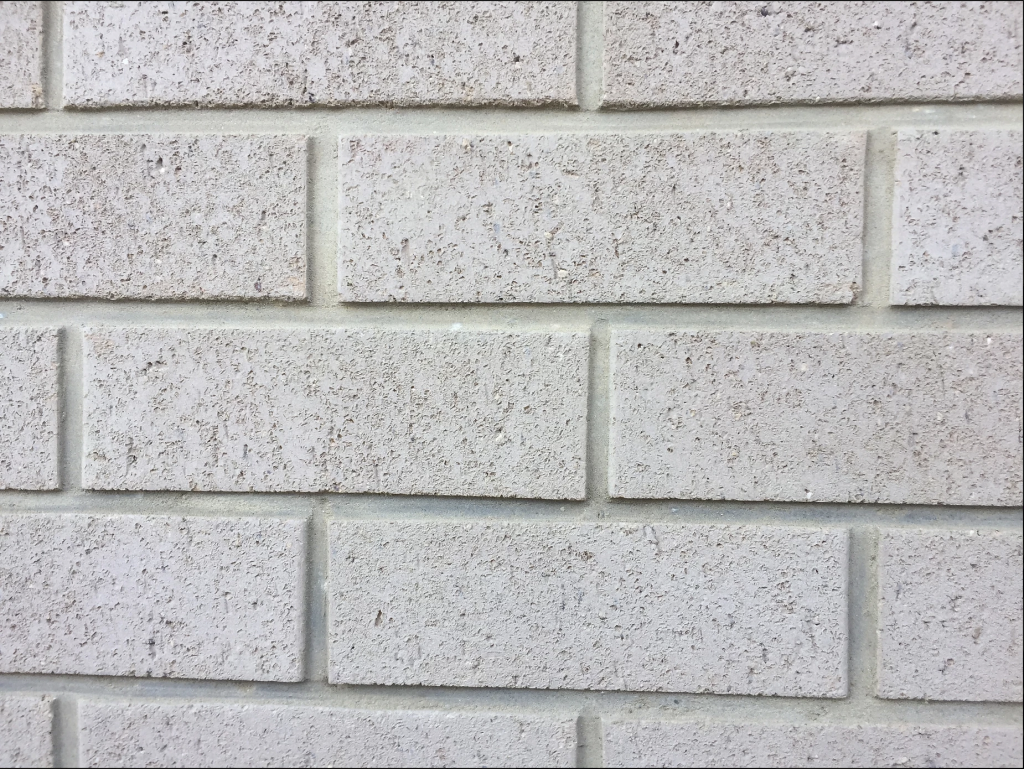
Well laid before cleaning 
Cut and cropped 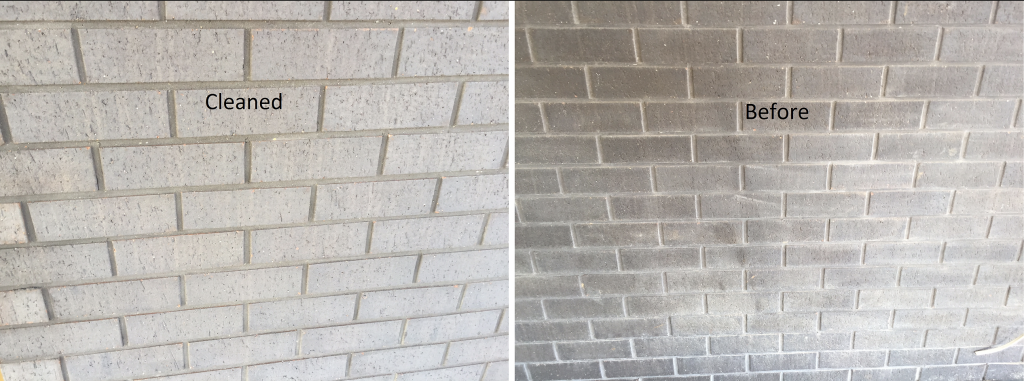
Greys (Before and After B10K clean) 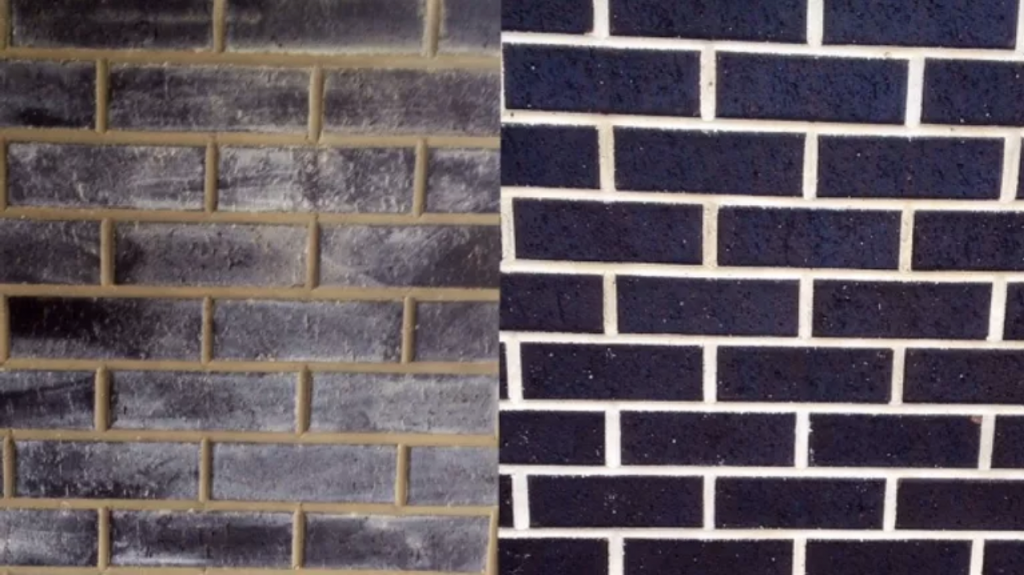
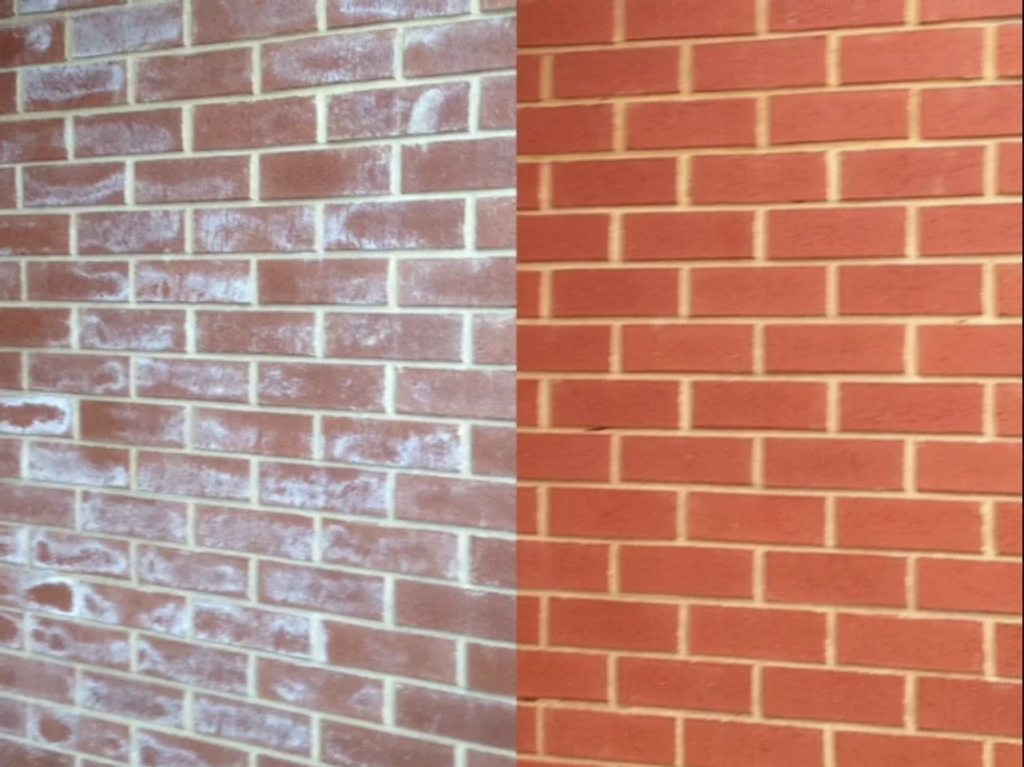
Well laid (Before and After) 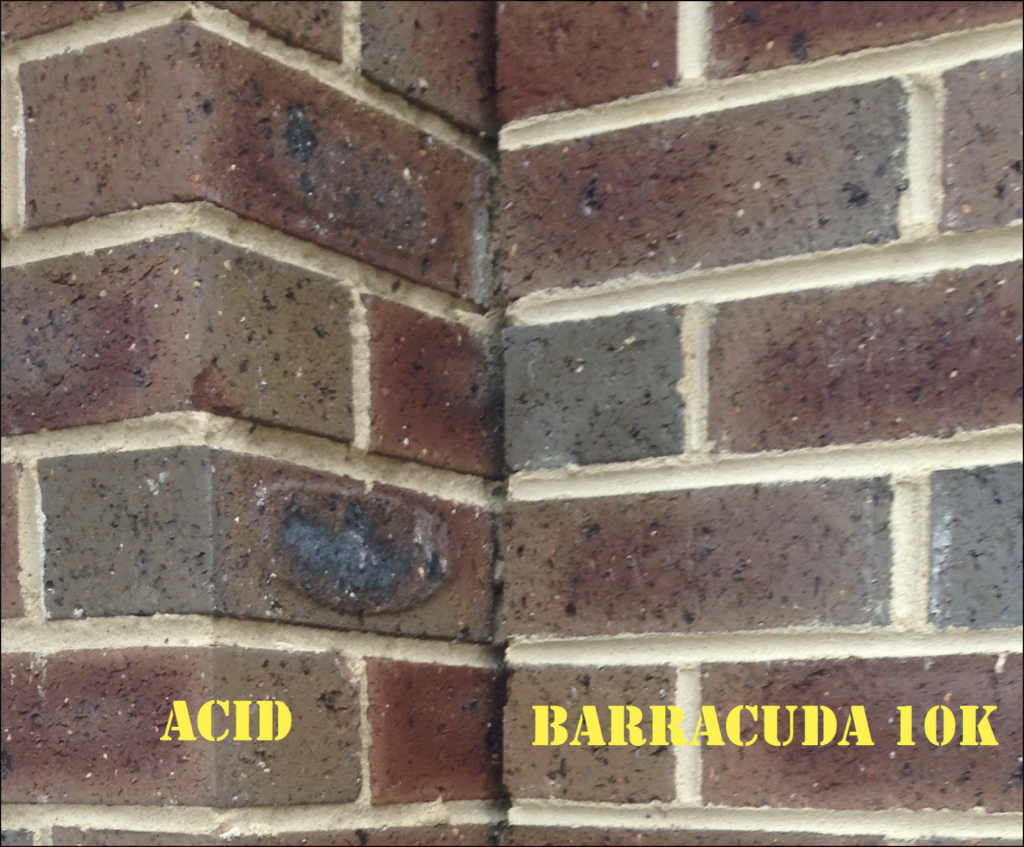
Photo (Same house)
Examples of Melbourne bricklaying
Failure to brush after cutting leaves difficult to clean lips, ridges and eyebrows of mortar on the edges as well as thick mortar smear covering the bricks. These are very difficult to remove once the mortar sets and will make the cleaning job look rough and give a ragged edge. The bricks below needed hand scraping and multiple applications of B10K to end up with a clean sharp finish. Each pass takes off a tiny layer from the surface of the mortar (and some bricks). However mortar beds will not appear acid damaged as B10K is much more gentle than Acid although there is a limit to the number of passes before the mortar becomes damaged. Please note that if you have to remove 5-10mm (or more) of mortar from the brick face with acid then it will be difficult to stop it removing similar amounts from the mortar beds.
Below are pictures of some typical work that is quite common in Melbourne. These bricklayers have stopped using jointing tools and they don’t cut the edges, there is no brushing and they don’t remove or clean splatter and none ever sponge clean. These processes have been eliminated to increase their speed and make more money. There is no consideration for the quality of the end result and they continue doing it because they are not accountable for, or don’t understand, the cost and collateral damage that will occur from cleaning this type of work with acid and pressure washing.
This work will never clean properly.
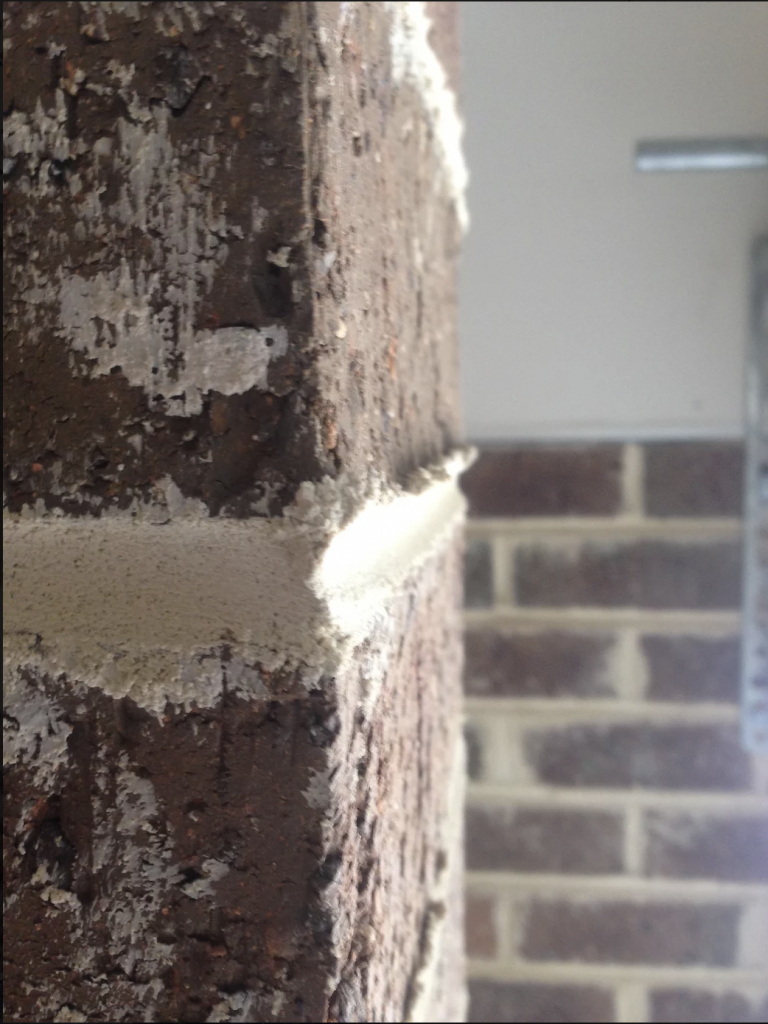
Bricklayers should cut and brush 
No cutting or brushing 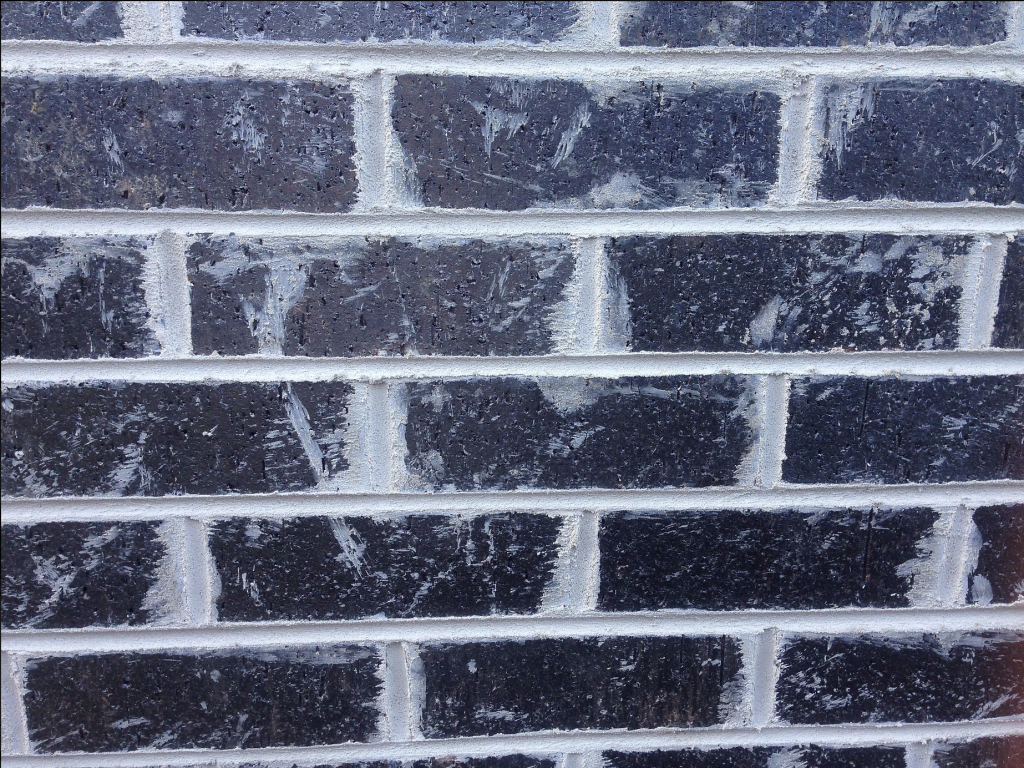
Leckie at 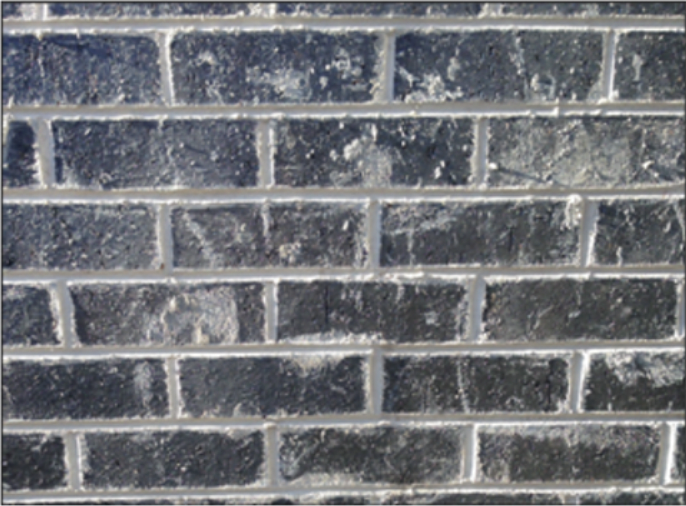
Ardwick St Heavy
Sponging
Sponging to clean bricks after they have been cut and brushed is one of the best ways to get a perfect finish provided you do it when the mortar is CRISP and use a clean damp sponge (NOT WET). Do not treat the water with Hydrochloric acid. HCl fixes the sand (fine silicates), cement and lime deep into the brick face crevices and they appear as an acid insoluble whitish deposit which is invisible when wet and almost impossible to clean.
A very toxic chemical (Hydrofluoric acid) is required to try to remove this “stain” aka “salts”. This problem can be prevented by frequently rinsing the sponge out with clean or fresh running water (best option). Wet sponging heavily textured bricks can also push the mortar deep into the brick face so care must be taken. Alternatively, if you cut and dry brush all surface mortar with a firm brush when its crisp the deposits and smear will be virtually eliminated, and this will allow us to clean with B10K and give a perfect finish.
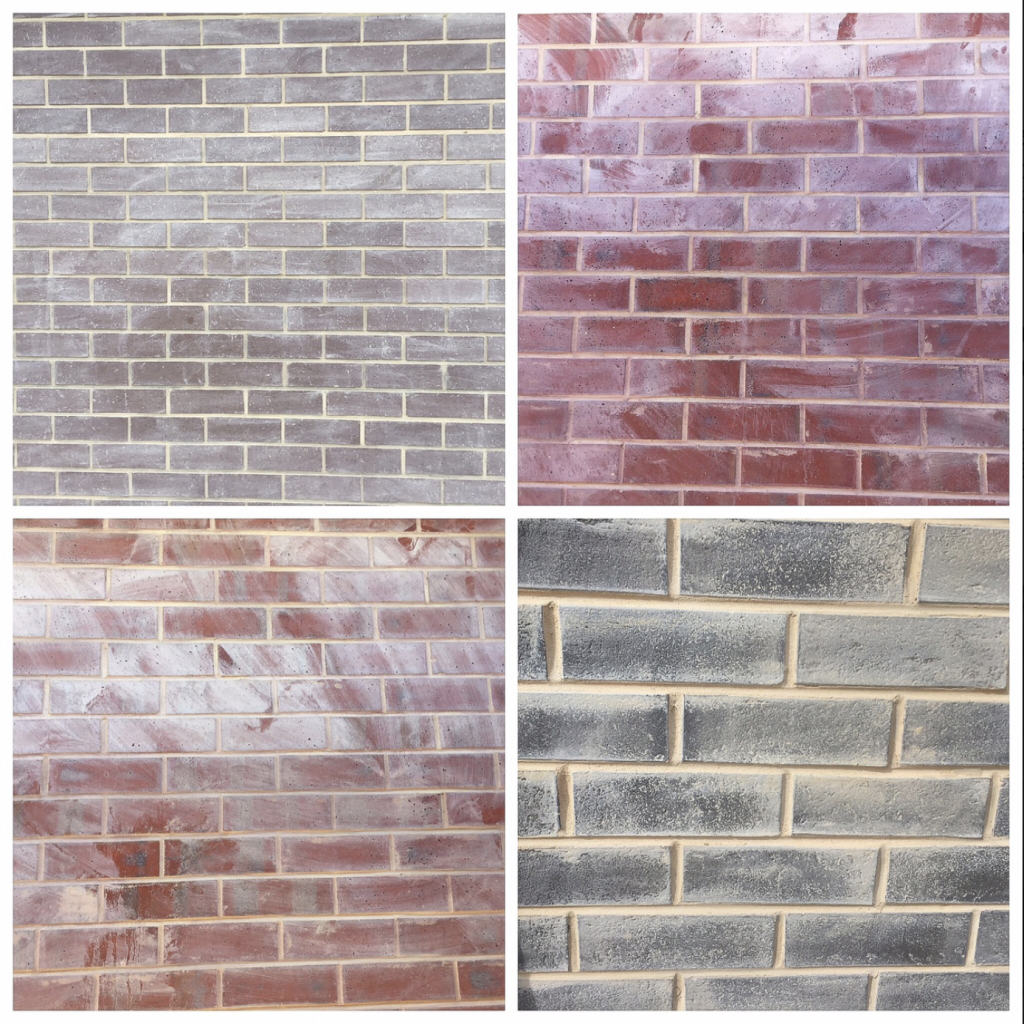
Sponge cleaned 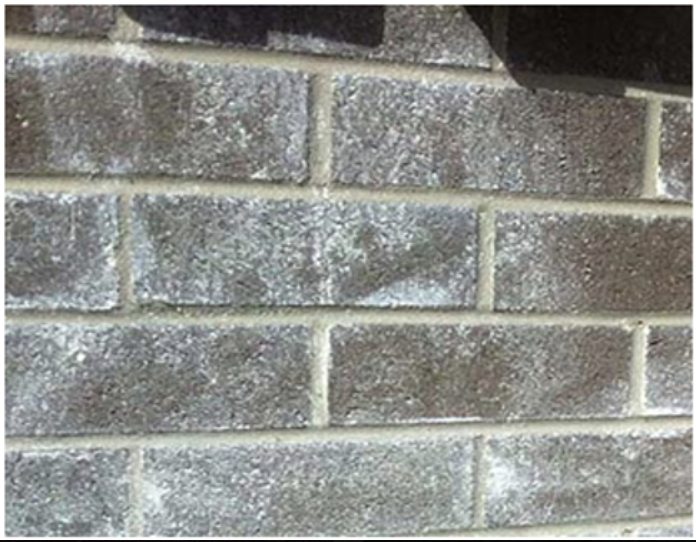
Clean sponge
More from our blog
Maecenas nec odio et ante tincidunt tepus. Donec vitae sapien ut libero venenatis fauci bus. Nullam quis ante. Etiam sit amet orcie get eros faucibus tincidunt. Aenean vulputate eleifend


